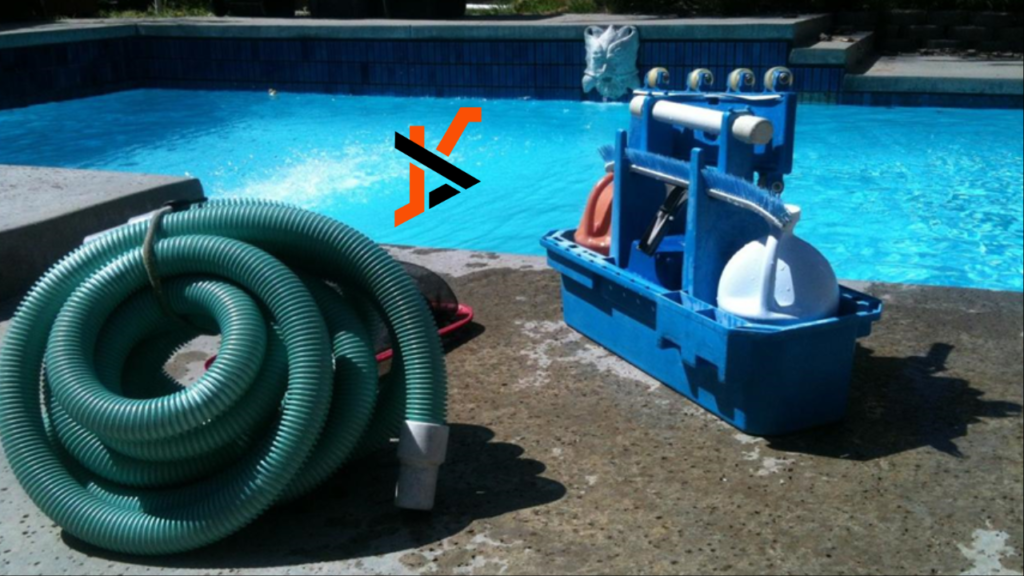A pool cleaner is a device or professional service used to maintain the cleanliness of swimming pools by removing debris, dirt, and algae. According to their functionality, pool cleaners come in various forms. A suitable pool cleaner can significantly impact the maintenance of your pool, ensuring it remains clean and safe. Here’s a comprehensive guide to help you choose the right pool cleaner.
Types of Pool Cleaners
▶ Manual Pool Cleaners
● Pool Skimmers are handheld nets designed to remove floating debris from the surface. They are ideal for small pools and minor debris, allowing quick and easy cleaning sessions. They are perfect for spot cleaning and daily maintenance but may require frequent use to maintain a pristine pool.
● Brushes and Vacuum Heads: These attach to telescopic poles to scrub walls and floors, offering a more thorough cleaning. Brushes help dislodge algae and dirt from surfaces, while vacuum heads can remove loosened debris. This method is labour-intensive but effectively addresses specific problem areas by providing targeted cleaning.
▶ Automatic Pool Cleaners
● Suction-Side Cleaners: These cleaners connect to the pool’s filtration system, moving around the pool to suck up debris. They are effective for fine particles but may require frequent filter cleaning. Suction-side cleaners are generally more affordable and can handle routine cleaning, making them a popular choice for many pool owners.
● Pressure-Side Cleaners: These cleaners attach to the pool’s return jet. They use the pool’s water pressure to move and collect larger debris into an attached bag. Pressure-side cleaners handle larger debris, such as leaves and twigs, without clogging the pool’s filtration system.
● Robotic Pool Cleaners: These are self-contained units with power and filtration systems. They offer high efficiency, ease of use, and superior cleaning capabilities. Robotic cleaners have intelligent technology to navigate the pool and clean thoroughly with minimal supervision. While they have a higher upfront cost, their energy efficiency and advanced features often justify the investment.
▶ In-Floor Cleaning Systems
During construction, these systems built into the pool structure use strategically placed jets to push debris towards the main drain. They provide thorough, automated cleaning but are expensive to install. In-floor systems are typically integrated during the construction of new pools and offer a seamless, low-maintenance cleaning solution once installed.
Benefits of Each Type
▶Manual Cleaners: These are cost-effective and simple to use, making them an excellent option for spot cleaning. However, they are labour-intensive and time-consuming, requiring regular manual effort to keep the pool clean.

▶Automatic Cleaners: These provide continuous cleaning with less effort. Suction-side and pressure-side cleaners offer reliable performance for different types of debris. Robotic cleaners, in particular, stand out due to their innovative technology, high efficiency, and ability to handle various pool shapes and sizes.
▶In-Floor Systems: These offer seamless integration and comprehensive cleaning but come at a higher upfront cost. They are typically limited to new pool installations and provide a low-maintenance solution once set up.
Factors to Consider
▶Pool Size and Shape: Larger, irregularly shaped pools benefit more from advanced robotic cleaners that can navigate complex layouts efficiently. Robotic or algae pool cleaners are designed to cover extensive areas and handle intricate designs, ensuring no spot is left uncleaned.
▶ Pool Surface Material: Certain cleaners are designed for vinyl, fibreglass, or concrete surfaces. Ensuring compatibility is crucial to avoid damaging the pool surface. For example, brushes for concrete pools might be too abrasive for vinyl liners.
▶ Debris Type: Consider the common debris in your pool. Fine particles require a suction-side cleaner, while larger leaves are best handled by pressure-side robotic cleaners or algae pool cleaners. Understanding the type of debris your pool typically collects will help you choose the most effective cleaner.
▶Maintenance and Budget: Balance initial costs with long-term maintenance expenses. Robotic cleaners may have higher upfront costs but lower operational expenses due to their energy efficiency and reduced need for pool chemicals. Manual and suction-side cleaners might be cheaper initially but could require more frequent maintenance and replacements.

